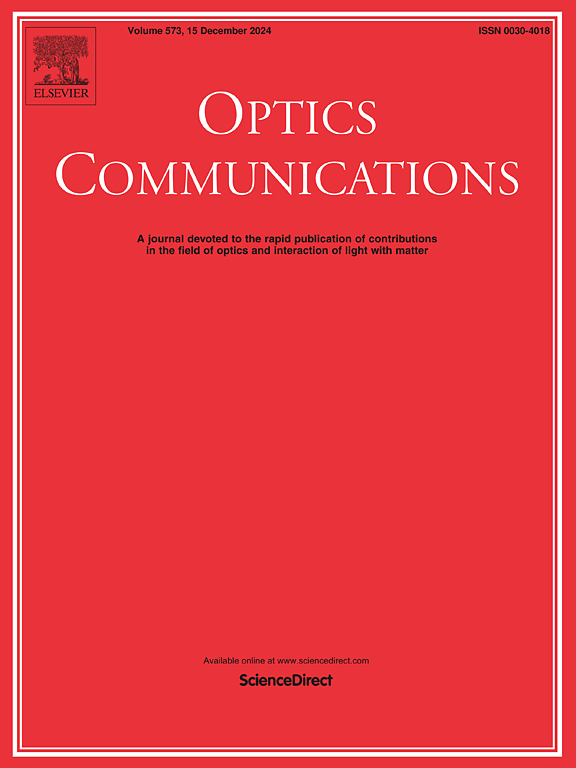A TDLAS gas detection method based on digital signal modulation
IF 2.2
3区 物理与天体物理
Q2 OPTICS
引用次数: 0
Abstract
This research presents a novel TDLAS gas concentration detection method based on digital modulation. The method inherits the advantage of a simple system structure from Direct Absorption Spectroscopy, as well as the excellent sensitivity of Wavelength Modulation Spectroscopy. A low-frequency sawtooth wave is employed to drive the laser, resulting in a digital direct absorption spectrum signal. By constructing a cosine modulation sequence in the time domain and performing linear interpolation on the direct absorption spectrum, it successfully converts to a wavelength-modulated absorption spectrum and simultaneously generates a digital reference signal at double the frequency. Ultimately, phase-locked amplification technology can be used to calculate the amplitude of the second harmonic. Since both the modulation and reference signals are generated digitally, they ensure a strict frequency-doubling relationship and phase correlation, which not only reduces the complexity of the hardware system but also effectively minimizes system errors. Because digital technology generates both the modulation and reference signals, it ensures that they have the same phase and a strict frequency-doubling relationship. Experimental results demonstrate that, when fitted by a cubic polynomial, the second harmonic amplitude and the gas concentration have a correlation coefficient (R2) as high as 0.99999 and a root mean square error as low as 0.0011. This proves the method's great accuracy and reliability in practical applications.
基于数字信号调制的 TDLAS 气体检测方法
本研究提出了一种基于数字调制的新型 TDLAS 气体浓度检测方法。该方法继承了直接吸收光谱法系统结构简单的优点和波长调制光谱法灵敏度高的特点。利用低频锯齿波驱动激光,产生数字直接吸收光谱信号。通过在时域中构建余弦调制序列并对直接吸收光谱进行线性插值,它可以成功转换为波长调制吸收光谱,并同时生成频率为两倍的数字参考信号。最终,锁相放大技术可用于计算二次谐波的振幅。由于调制信号和参考信号都是数字生成的,因此它们能确保严格的倍频关系和相位相关性,这不仅降低了硬件系统的复杂性,还能有效减少系统误差。由于调制信号和参考信号均由数字技术生成,因此可以确保它们具有相同的相位和严格的倍频关系。实验结果表明,用三次多项式拟合时,二次谐波振幅与气体浓度的相关系数(R2)高达 0.99999,均方根误差低至 0.0011。这证明该方法在实际应用中非常准确可靠。
本文章由计算机程序翻译,如有差异,请以英文原文为准。
求助全文
约1分钟内获得全文
求助全文
来源期刊

Optics Communications
物理-光学
CiteScore
5.10
自引率
8.30%
发文量
681
审稿时长
38 days
期刊介绍:
Optics Communications invites original and timely contributions containing new results in various fields of optics and photonics. The journal considers theoretical and experimental research in areas ranging from the fundamental properties of light to technological applications. Topics covered include classical and quantum optics, optical physics and light-matter interactions, lasers, imaging, guided-wave optics and optical information processing. Manuscripts should offer clear evidence of novelty and significance. Papers concentrating on mathematical and computational issues, with limited connection to optics, are not suitable for publication in the Journal. Similarly, small technical advances, or papers concerned only with engineering applications or issues of materials science fall outside the journal scope.
 求助内容:
求助内容: 应助结果提醒方式:
应助结果提醒方式:


